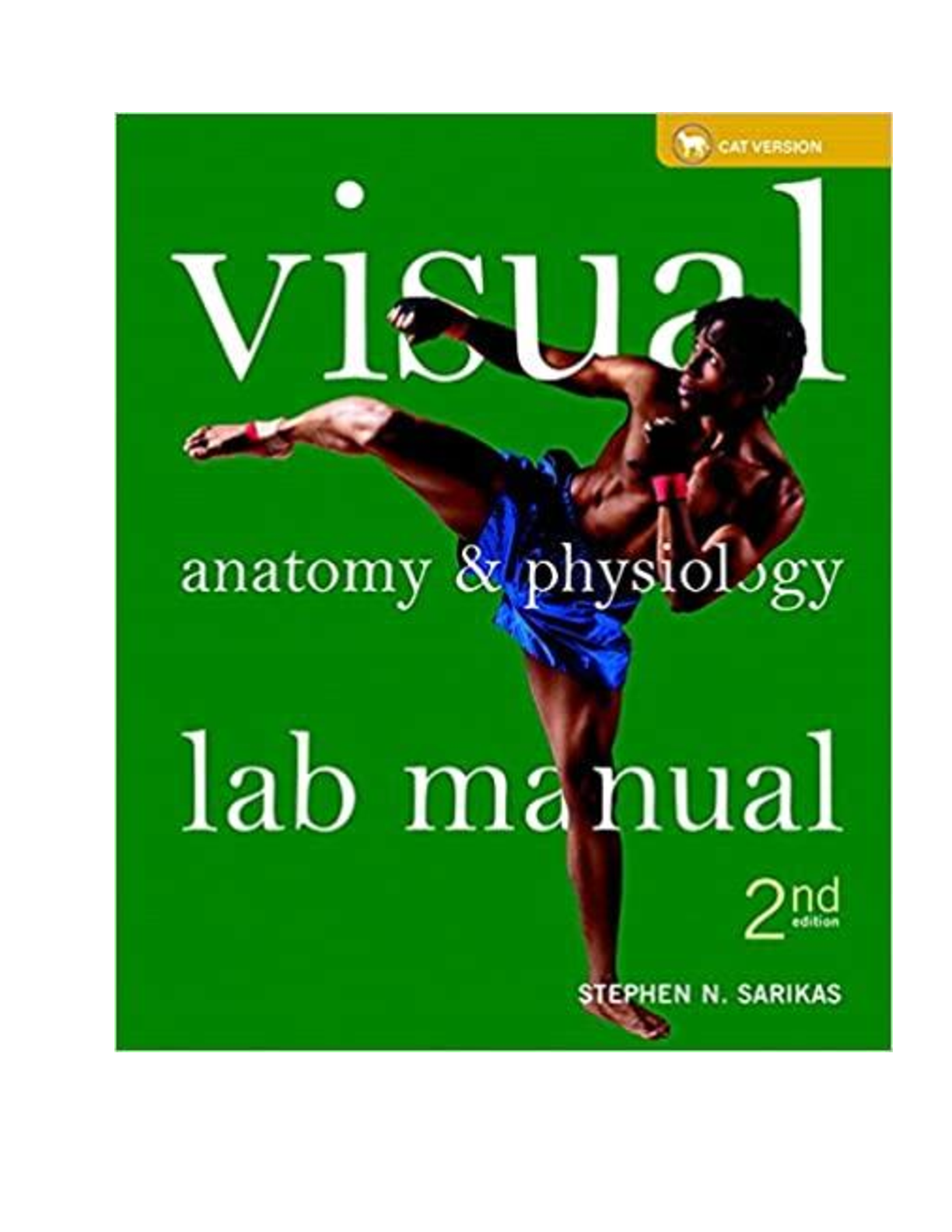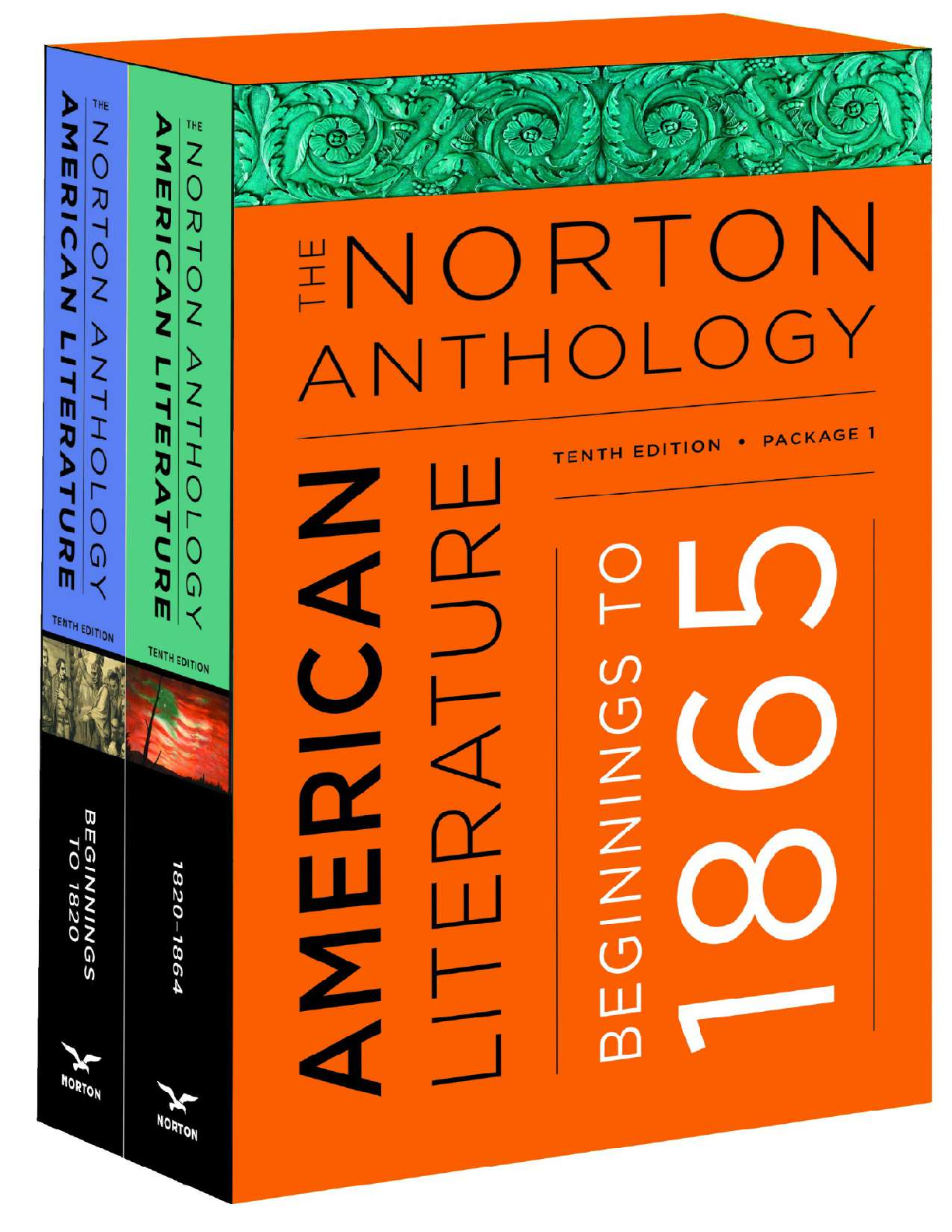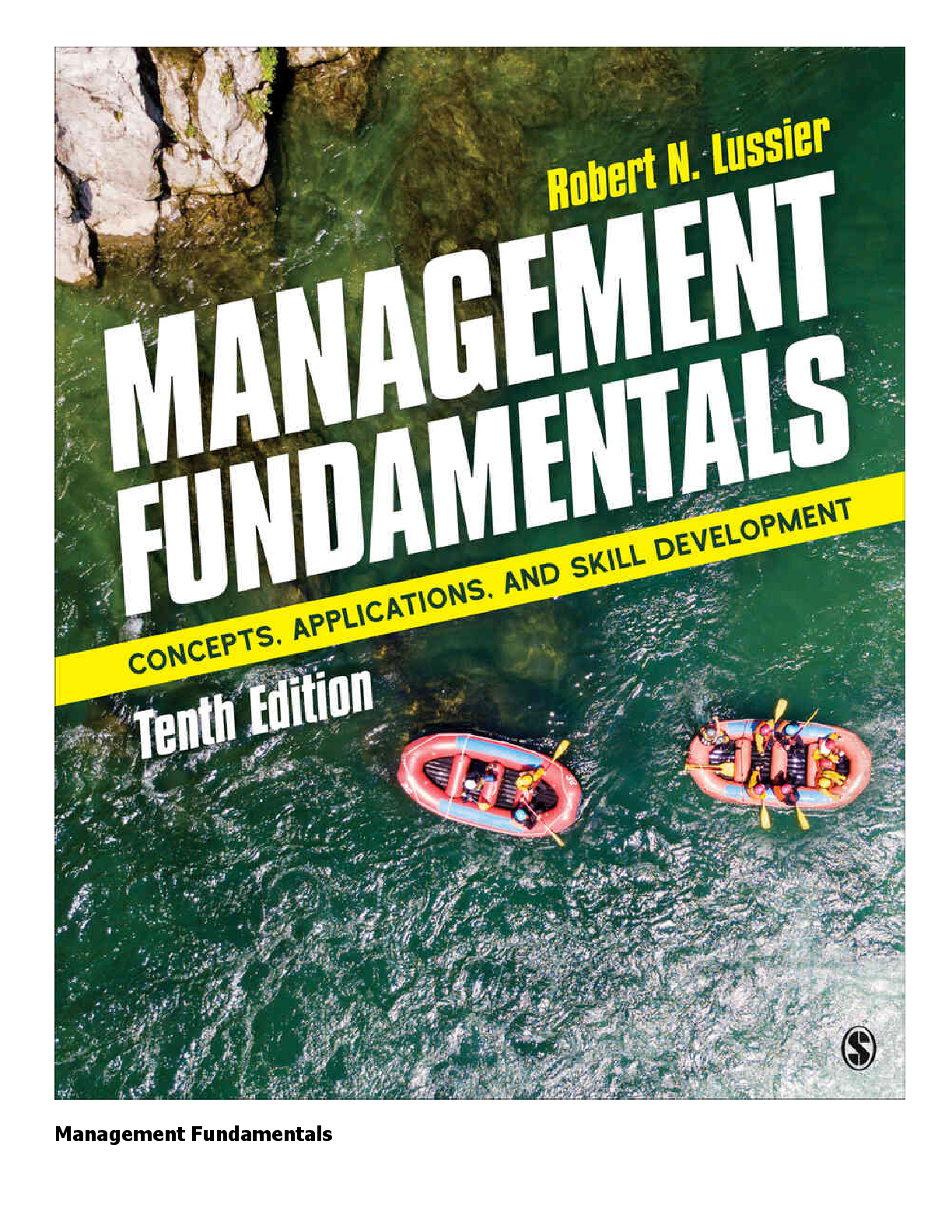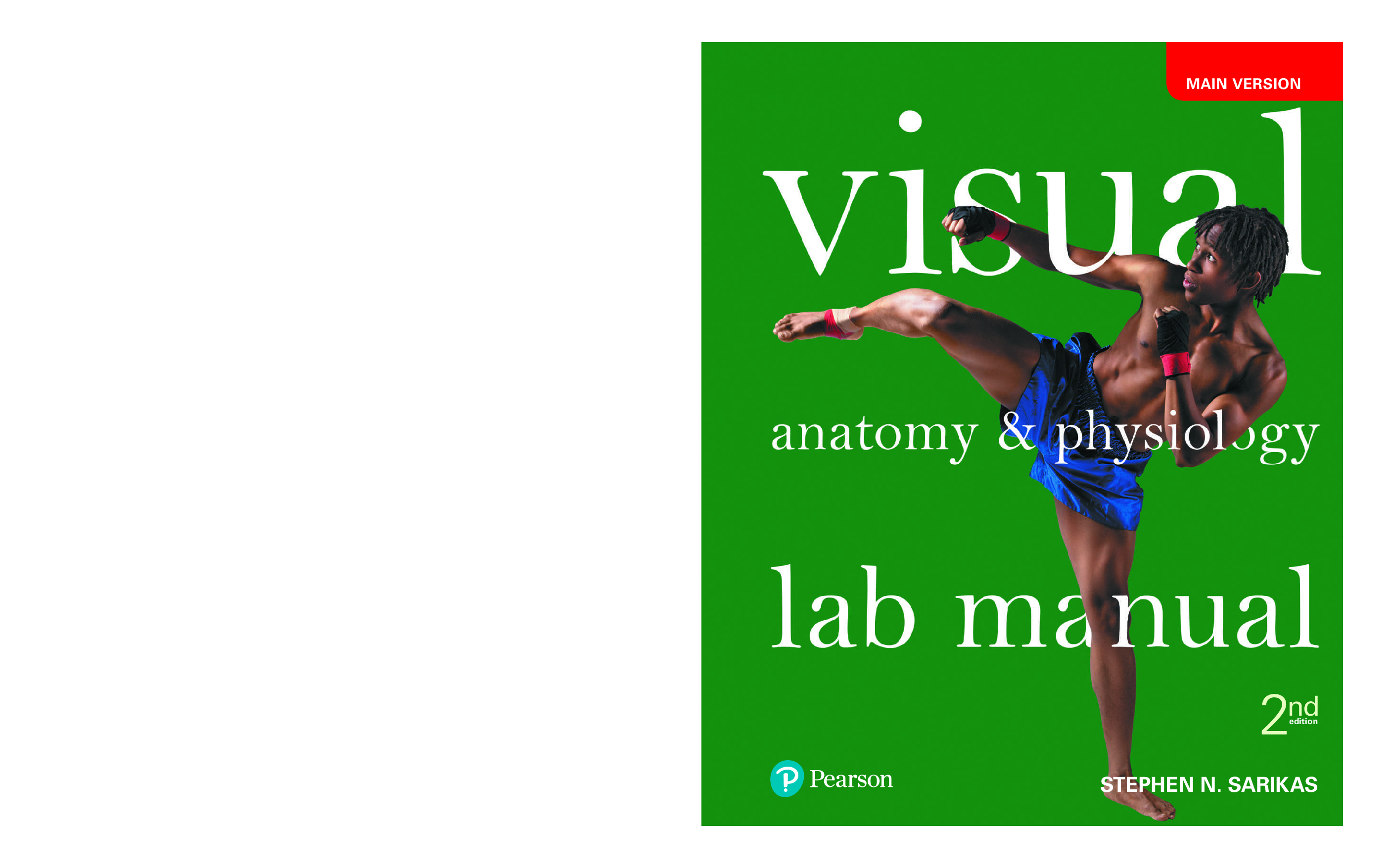Anatomy > eBook-PDF > [eBook] [PDF] Visual Anatomy Physiology Lab Manual, Cat Version, 2nd Edition By Stephen N. Sarikas (All)
[eBook] [PDF] Visual Anatomy Physiology Lab Manual, Cat Version, 2nd Edition By Stephen N. Sarikas
Document Content and Description Below
Brief Contents A Brief, Hands-On Lab Manual with Frequent Opportunities to Practice Prepare, Practice, and Put It All Together in the Lab Continuous Learning Before, During, and After Lab with Mas... teringA&P™ MasteringA&P™ Access the Complete Lab Manual On or Offline with eText 2.0 Instructor and Student Support Title Page Copyright Page Preface About the Author Acknowledgments Contents Exercise 1: Body Organization and Terminology Activity 1.1. Using Anatomical Terms to Describe Body Organization Activity 1.2. Defining Anatomical Planes and Sections Activity 1.3. Identifying Organs and Organ Systems Activity 1.4. Identifying Anatomical Regions Activity 1.5. Exploring Body Cavities Exercise 1. Review Sheet: Body Organization and Terminology Exercise 2: Care and Use of the Compound Light Microscope Activity 2.1. Learning the Parts of a Light Microscope Activity 2.2. Viewing a Specimen with a Compound Microscope Activity 2.3. Inversion of Image: Viewing the Letter e Activity 2.4. Perceiving Depth of Field Activity 2.5. Determining the Diameter of the Field of View Exercise 2. Review Sheet: Care and Use of the Compound Light Microscope Exercise 3: Cell Structure and Cell Division Activity 3.1. Examining Cell Structure Activity 3.2. Preparing a Wet Mount of Cheek Epithelial Cells Activity 3.3. Microscopic Observations of Various Cell Types Activity 3.4. Examining the Stages of Mitosis Exercise 3. Review Sheet: Cell Structure and Cell Division Exercise 4: Membrane Transport Activity 4.1. Demonstrating Simple Diffusion Activity 4.2. Observing Osmosis Exercise 4. Review Sheet: Membrane Transport Exercise 5: Tissues Activity 5.1. Epithelial Tissue: Microscopic Observations of Squamous Epithelia Activity 5.2. Epithelial Tissue: Microscopic Observations of Cuboidal Epithelia Activity 5.3. Epithelial Tissue: Microscopic Observations of Columnar Epithelia Activity 5.4. Connective Tissue: Microscopic Observations of Loose Connective Tissues Activity 5.5. Connective Tissue: Microscopic Observations of Dense Connective Tissues Activity 5.6. Connective Tissue: Microscopic Observations of Cartilage Activity 5.7. Connective Tissue: Microscopic Observations of Bone Activity 5.8. Connective Tissue: Microscopic Observations of Blood Activity 5.9. Muscle Tissue: Microscopic Observations of Muscle Tissue Activity 5.10. Nervous Tissue: Microscopic Observations of Neurons Exercise 5. Review Sheet: Tissues Exercise 6: The Integumentary System Activity 6.1. Examining the Microscopic Structure of Skin Activity 6.2. Studying the Accessory Structures of Skin Activity 6.3. Examining an Anatomical Model of the Integumentary System Activity 6.4. Examining Fingerprint Patterns Activity 6.5. Examining the Structure of Nails Exercise 6. Rerview Sheet: The Integumentary System Exercise 7: Introduction to the Skeletal System and the Axial Skeleton Activity 7.1. Classifying Bones According to Shape Activity 7.2. Classifying Bones According to Location Activity 7.3. Examining the Microscopic Structure of Bone Activity 7.4. Examining the Arrangement of Compact and Spongy Bone Activity 7.5. Identifying Bone Markings Activity 7.6. Bones of the Skull: Examining an Anterior View Activity 7.7. Bones of the Skull: Examining the Lateral and Posterior Views Activity 7.8. Examining the Base of the Skull Activity 7.9. Examining a Sagittal Section of the Skull Activity 7.10. Examining the Fetal Skull Activity 7.11. Examining the General Features of the Vertebral Column Activity 7.12. Examining the Unique Features of Cervical and Thoracic Vertebrae Activity 7.13. Examining the Unique Features of Lumbar Vertebrae and the Sacrum Activity 7.14. Examining the Structure of the Thoracic Cage Exercise 7. Review Sheet: Introduction to the Skeletal System and the Axial Skeleton Exercise 8: The Appendicular Skeleton Activity 8.1. Upper Limb: Examining the Bones of the Pectoral Girdle Activity 8.2. Upper Limb: Examining the Bones of the Arm and Forearm Activity 8.3. Upper Limb: Examining the Bones of the Wrist and Hand Activity 8.4. Lower Limb: Examining the Bones of the Pelvic Girdle Activity 8.5. Lower Limb: Examining the Bones of the Thigh and Leg Activity 8.6. Lower Limb: Examining the Bones of the Foot Exercise 8. Review Sheet: The Appendicular Skeleton Exercise 9: Articulations Activity 9.1. Examining the Structure of Fibrous Joints Activity 9.2. Examining the Structure of Cartilaginous Joints Activity 9.3. Understanding the Types of Movements at Synovial Joints: Gliding and Angular Movements Activity 9.4. Understanding the Types of Movements at Synovial Joints: Rotational and Special Moveme Activity 9.5. Synovial Joints: Examining the Structure and Function of Gliding and Hinge Joints Activity 9.6. Synovial Joints: Examining the Structure and Function of Pivot and Ellipsoid Joints Activity 9.7. Synovial Joints: Examining the Structure and Function of Saddle and Ball and Socket Jo Activity 9.8. Synovial Joints: Examining the Structure of Synovial Joints in the Upper Limb Activity 9.9. Synovial Joints: Examining the Structure of Synovial Joints in the Lower Lim Exercise 9. Review Sheet: Articulations Exercise 10: Introduction to Skeletal Musde Activity 10.1. Examining the Microscopic Structure of Skeletal Muscle Fibers Activity 10.2. Examining the Neuromuscular Junction at a Skeletal Muscle Cell Activity 10.3. Observing the Contraction of Skeletal Muscle Fibers Exercise 10. Review Questions: Introduction to Skeletal Muscle Exercise 11: Muscles of the Head, Neck, and Trunk Activity 11.1. Understanding How Skeletal Muscles Produce Movement Activity 11.2. The Head: Examining Muscles of Facial Expression and Mastication Activity 11.3. The Head: Examining Extrinsic Eye Muscles, Extrinsic Tongue Muscles, and Muscles of t Activity 11.4. Examining Muscles of the Neck Activity 11.5. The Trunk: Examining Muscles of the Thorax Activity 11.6. The Trunk: Examining Muscles of the Abdominal Wall Activity 11.7. The Trunk: Studying the Deep Back Muscles Activity 11.8. The Trunk: Examining Muscles of the Pelvic Floor Exercise 11. Review Sheet: Muscles of the Head, Neck, and Trunk Exercise 12: Muscles of the Upper and Lower Limbs Activity 12.1. Muscles of the Upper Limb: Examining Muscles of the Shoulder That Move the Scapula Activity 12.2. Muscles of the Upper Limb: Examining Muscles of the Shoulder That Move the Arm Activity 12.3. Muscles of the Upper Limb: Examining Muscles of the Arm Activity 12.4. Muscles of the Upper Limb: Examining Muscles of the Anterior Forearm Activity 12.5. Muscles of the Upper Limb: Examining Muscles of the Posterior Forearm Activity 12.6. Muscles of the Upper Limb: Examining the Intrinsic Muscles of the Hand Activity 12.7. Muscles of the Lower Limb: Examining the Muscles of the Gluteal Region Activity 12.8. Muscles of the Lower Limb: Examining the Muscles of the Anterior Thigh Activity 12.9. Muscles of the Lower Limb: Examining the Muscles of the Medial Thigh Activity 12.10. Muscles of the Lower Extremity: Examining the Muscles of the Posterior Thigh Activity 12.11. Muscles of the Lower Limb: Examining the Muscles of the Anterior and Lateral Leg Activity 12.12. Muscles of the Lower Limb: Examining the Muscles of the Posterior Leg Activity 12.13. Muscles of the Lower Limb: Examining the Intrinsic Foot Muscles Activity 12.14. Surface Anatomy: Upper Limb Muscles and Associated Structure Activity 12.15. Surface Anatomy: Lower Limb Muscles and Associated Structures Exercise 12. Review Sheet: Muscles of the Upper and Lower Limbs Exercise 13: Physiology of the Muscular System Activity 13.1. Demonstrating Isotonic and Isometric Contractions Activity 13.2. Electromyography Using the Biopac Student Laboratory System: Recording Motor Unit Rec Activity 13.3. Electromyography Using the Biopac Student Laboratory System: Data Analysis of Motor U Activity 13.4. Examining Resistance versus Contraction Speed Activity 13.5. Demonstrating Muscle Fatigue Activity 13.6. Testing Muscle Flexibility Exercise 13. Review Sheet: Physiology of the Muscular System Exercise 14: Nervous Tissue Activity 14.1. Overview of Cell Types in Nervous Tissue Activity 14.2. Central Nervous System: Examining the Microscopic Structure of the Cerebrum Activity 14.3. Central Nervous System: Examining the Microscopic Structure of the Cerebellum Activity 14.4. Central Nervous System: Examining the Microscopic Structure of the Spinal Cord Activity 14.5. Peripheral Nervous System: Examining the Microscopic Structure of Spinal Nerve Roots Activity 14.6. Peripheral Nervous System: Examining the Microscopic Structure of Peripheral Nerves Activity 14.7. Demonstrating the Significance of the Myelin Sheath Exercise 14. Review Sheet: Nervous Tissue Exercise 15: The Brain and Cranial Nerves Activity 15.1. Dissecting the Sheep Meninges Activity 15.2. Surface Anatomy of the Sheep Brain: Examining Surface Structures Activity 15.3. Sectional Anatomy of the Sheep Brain: Examining Internal Structures from a Midsagitta Activity 15.4. Sectional Anatomy of the Sheep Brain: Examining Internal Structures from a Coronal Se Activity 15.5. Examining Brain Ventricles and the Flow of Cerebrospinal Fluid Activity 15.6. Electroencephalography Using the Biopac Student Lab System Activity 15.7. Identifying the Origins of the Cranial Nerves Activity 15.8. Cranial Nerve Function: Testing the Cranial Nerves for Olfaction, Vision, and Volunta Activity 15.9. Cranial Nerve Function: Testing the Cranial Nerves to the Face and Inner Ear Activity 15.10. Cranial Nerve Function: Testing the Cranial Nerves to the Tongue, Pharynx, and Inter Activity 15.11. Identifying the Skull Openings for the Cranial Nerves Exercise 15. Review Sheet: The Brain and Cranial Nerves Exercise 16: The Spinal Cord and Spinal Nerves Activity 16.1. Identifying Spinal Meninges and Associated Structures Activity 16.2. Examining the Gross Anatomy of the Spinal Cord and Spinal Nerves Activity 16.3. Using a Two-Point Discrimination Test Activity 16.4. Testing General Sensory Function in Dermatomes Exercise 16. Review Sheet: The Spinal Cord and Spinal Nerves Exercise 17: Human Reflex Physiology Activity 17.1. Assessing Coordination Activity 17.2. Assessing Balance Activity 17.3. Assessing Coordinated Movement and Balance Activity 17.4. Reflex Tests for the Upper Limb Activity 17.5. Reflex Tests for the Lower Limb Exercise 17. Review Sheet: Human Reflex Physiology Exercise 18: Special Senses Activity 18.1. Olfaction: Examining the Anatomy of Olfactory Structures Activity 18.2. Olfaction: Testing Olfactory Adaptation Activity 18.3. Gustation: Examining the Anatomy of Gustatory Structures Activity 18.4. Gustation: Testing Gustatory Sensations Activity 18.5. Vision: Examining the Anatomy of Accessory Eye Structures Activity 18.6. Vision: Gross Anatomy of the Eye Activity 18.7. Vision: Dissection of the Cow Eye Activity 18.8. Vision: Examining the Retina Activity 18.9. Performing Visual Tests: Binocular Vision and Depth Percept Activity 18.10. Performing Visual Tests: Near-Point Accommodation Activity 18.11. Performing Visual Tests: Visual Acuity Activity 18.12. Performing Visual Tests: Astigmatism, Pupillary Reflex, and Color Blindness Activity 18.13. Hearing: Examining the Gross Anatomy of the Ear Activity 18.14. Hearing: Examining the Microscopic Anatomy of the Cochlea Activity 18.15. Performing Hearing Tests: Hearing Acuity and Localizing Sound Activity 18.16. Performing Hearing Tests: Weber Test and Rinne Test Exercise 18. Review Sheet: Special Senses Exercise 19: The Endocrine System Activity 19.1. Examining the Gross Anatomy of the Endocrine System: Endocrine Organs in the Head Activity 19.2. Examining the Gross Anatomy of the Endocrine System: Endocrine Organs in the Neck and Activity 19.3. Examining the Gross Anatomy of the Endocrine System: Endocrine Organs in the Abdomino Activity 19.4. Examining the Microscopic Anatomy of the Endocrine Organs: Pituitary Gland Activity 19.5. Examining the Microscopic Anatomy of the Endocrine Organs: Thyroid and Parathyroid Gl Activity 19.6. Examining the Microscopic Anatomy of the Endocrine Organs: Pancreas and Adrenal Gland Exercise 19. Review Sheet: The Endocrine System Exercise 20: Blood Cells Activity 20.1. Identifying Blood Cells Activity 20.2. Identifying White Blood Cell Types Activity 20.3. Performing a Differential White Blood Cell Count Activity 20.4. Determining Your Blood Type Exercise 20. Review Sheet: Blood Cells Exercise 21: Gross Anatomy of the Heart Activity 21.1. Examining the Organization of the Pericardium Activity 21.2. Examining the External Anatomy of the Heart Activity 21.3. Examining the Internal Anatomy of the Heart: The Heart Chambers Activity 21.4. Examining the Internal Anatomy of the Heart: The Heart Valves Activity 21.5. Examining the Internal Anatomy of the Heart: The Heart Wall Activity 21.6. Identifying Blood Vessels of the Coronary Circulation Activity 21.7. Tracing Blood Flow through the Heart Chambers Activity 21.8. Surface Anatomy: Identifying the Position of the Heart Activity 21.9. Dissecting the Sheep Heart: External Anatomy Activity 21.10. Dissecting the Sheep Heart: Internal Anatomy Exercise 21. Review Sheet: Gross Anatomy of the Heart Exercise 22. Anatomy of Blood Vessels Activity 22.1. Examining the Microscopic Structure of Blood Vessels: Arteries Activity 22.2. Examining the Microscopic Structure of Blood Vessels: Veins and Capillaries Activity 22.3. Identifying Blood Vessels in the Pulmonary Circulation Activity 22.4. Systemic Circulation: Identifying Blood Vessels in the Head and Neck Activity 22.5. Systemic Circulation: Examining the Blood Supply to the Brain Activity 22.6. Systemic Circulation: Identifying Blood Vessels in the Thoracic Cavity Activity 22.7. Systemic Circulation: Identifying Blood Vessels in the Abdominopelvic Cavity Activity 22.8. Systemic Circulation: Identifying Blood Vessels in the Thoracic Wall and Upper Limbs Activity 22.9. Systemic Circulation: Identifying Blood Vessels in the Lower Limbs Activity 22.10. Surface Anatomy: Identifying Superficial Veins Exercise 22. Review Sheet: Anatomy of Blood Vessels Exercise 23: Cardiovascular Physiology Activity 23.1. Listening for Heart Sounds Activity 23.2. Measuring Blood Pressure Activity 23.3. Measuring the Pulse Rate Activity 23.4. Examining the Effect of Exercise on Blood Pressure and Pulse Rate Activity 23.5. Electrocardiography Using the Biopac Student Lab System: Recording the Electrical Act Activity 23.6. Electrocardiography Using the Biopac Student Lab System: Data Analysis of the Electro Exercise 23. Review Sheet: Cardiovascular Physiology Exercise 24: The Lymphatic System Activity 24.1. Examining the Gross Anatomical Structure of Lymphatic Organs Activity 24.2. Examining the Gross Anatomical Structure of Lymphatic Nodules Activity 24.3. Examining the Gross Anatomical Structure of the Lymphatic Circulation Activity 24.4. Examining the Light Microscopic Structure of the Thymus and Spleen Activity 24.5. Examining the Light Microscopic Structure of Lymph Nodes and Lymphatic Nodules Exercise 24. Review Sheet: The Lymphatic System Exercise 25: Anatomy of the Respiratory System Activity 25.1. Gross Anatomy: Examining the Structure of the Nose and Nasal Cavity Activity 25.2. Gross Anatomy: Examining the Structure of the Pharynx and Larynx Activity 25.3. Gross Anatomy: Examining the Structure of the Trachea Activity 25.4. Surface Anatomy: Respiratory Structures in the Neck Activity 25.5. Gross Anatomy: Examining the Structure of the Lungs Activity 25.6. Microscopic Anatomy: Examining the Structure of the Trachea Activity 25.7. Microscopic Anatomy: Examining the Structure of the Lungs Exercise 25. Review Sheet: Anatomy of the Respiratory System Exercise 26: Respiratory Physiology Activity 26.1. Examining Pulmonary Ventilation Activity 26.2. Identifying Respiratory Muscles Activity 26.3. Measuring Respiratory Volumes Activity 26.4. Predicting and Measuring Vital Capacity Activity 26.5. Measuring Respiratory Volumes Using the Biopac Student Lab System Activity 26.6. Calculating Respiratory Volumes and Capacities Activity 26.7. Calculating the Respiratory Minute Volume and Alveolar Ventilation Exercise 26. Review Sheet: Respiratory Physiology Exercise 27: Anatomy of the Digestive System Activity 27.1. Examining the Organization of the Peritoneum Activity 27.2. Examining the Gross Anatomy of the Alimentary Canal: Oral Cavity, Pharynx, and Esopha Activity 27.3. Examining the Gross Anatomy of the Alimentary Canal: Stomach and Small Intestine Activity 27.4. Examining the Gross Anatomy of the Alimentary Canal: Large Intestine Activity 27.5. Examining the Gross Anatomy of Accessory Digestive Structures: Tongue and Salivary Gl Activity 27.6. Examining the Gross Anatomy of Accessory Digestive Structures: Teeth Activity 27.7. Examining the Gross Anatomy of Accessory Digestive Structures: Liver, Gallbladder, an Activity 27.8. Examining the Microscopic Structure of the Alimentary Canal: Esophagus and Stomach Activity 27.9. Examining the Microscopic Structure of the Alimentary Canal: Small Intestine Activity 27.10. Examining the Microscopic Structure of the Alimentary Canal: Large Intestine Activity 27.11. Examining the Microscopic Structure of Accessory Digestive Organs: Salivary Glands Activity 27.12. Examining the Microscopic Structure of Accessory Digestive Organs: Liver and Pancrea Exercise 27. Review Sheet: Anatomy of the Digestive System Exercise 28: Actions of a Digestive Enzyme Activity 28.1. Conducting Control Tests for Starch and Disaccharides Activity 28.2. Testing for the Presence of Starch and Disaccharides in Various Beverages Activity 28.3. Examining the Effect of pH on Salivary Amylase Activit Exercise 28. Review Sheet: Actions of a Digestive Enzyme Exercise 29: Anatomy of the Urinary System Activity 29.1. Examining the Gross Anatomy of the Urinary System Activity 29.2. Examining the Nephron Activity 29.3. Studying the Blood Supply to the Kidney Activity 29.4. Examining the Microscopic Structure of the Urinary System Activity 29.5. Dissecting a Kidney Exercise 29. Review Sheet: Anatomy of the Urinary System Exercise 30: Urinary Physiology Activity 30.1. Correlating Nephron Structure with Urine Production Activity 30.2. Examining the Physical Characteristics of Urine Activity 30.3. Examining the Chemical Characteristics of Urine Activity 30.4. Examining a Urine Sample Microscopically Exercise 30. Review Sheet: Urinary Physiology Exercise 31: The Male Reproductive System Activity 31.1. Examining the Gross Anatomy of the Male Reproductive System: Testes and Accessory Duc Activity 31.2. Examining the Gross Anatomy of the Male Reproductive System: Accessory Glands Activity 31.3. Examining the Gross Anatomy of the Male External Genitalia Activity 31 4. Examining the Microscopic Anatomy of Male Reproductive Organs: Testis and Epididymis Activity 31.5. Examining the Microscopic Anatomy of Male Reproductive Organs: Ductus Deferens and Pr Activity 31.6. Examining the Microscopic Anatomy of Male Reproductive Organs: Penis and Spermatozoa Exercise 31. Review Sheet: The Male Reproductive System Exercise 32: The Female Reproductive System Activity 32.1. Examining the Gross Anatomy of the Female Reproductive System: Ovaries and Accessory Activity 32.2. Examining the Gross Anatomy of the Female Reproductive System: External Genitalia Activity 32.3. Examining the Gross Anatomy of the Female Reproductive System: Mammary Glands Activity 32.4. Examining the Microscopic Anatomy of the Female Reproductive System: Ovary Activity 32.5. Examining the Microscopic Anatomy of the Female Reproductive System: Uterus Activity 32.6. Examining the Microscopic Anatomy of the Female Reproductive System: Uterine Tubes an Exercise 32. Review Sheet: The Female Reproductive System Dissection Exercise C1: Introduction to the Cat and Removal of the Skin Activity C1.1. Comparing Directional Terms for Bipedal and Quadrupedal Organisms Activity C1.2. Identifying the Bones of the Cat Skeleton Activity C1.3. Identifying External Structures on the Cat Activity C1.4. Removing the Skin from the Cat Exercise C1. Review Sheet: Introduction to the Cat and Removal of the Skin Dissection Exercise C2: Dissection of the Cat Muscular System Activity C2.1. Identifying Muscles of the Ventral Thorax and Abdomen Activity C2.2. Identifying Muscles of the Dorsal Thorax and Abdomen Activity C2.3. Identifying Muscles of the Head and Neck Activity C2.4. Identifying Muscles of the Forelimb Activity C2.5. Identifying Muscles of the Hindlimb Exercise C2. Review Sheet: Dissection of the Cat Muscular System Dissection Exercise C3: Dissection of the Cat Peripheral Nervous System Activity C3.1. Identifying Major Peripheral Nerves of the Brachial Plexus Activity C3.2. Identifying Major Peripheral Nerves of the Lumbar Plexus Activity C3.3. Identifying Major Peripheral Nerves of the Sacral Plexus Exercise C3. Review Sheet: Dissection of the Cat Peripheral Nervous System Dissection Exercise C4: Dissection of the Cat Ventral Body Cavities and Endocrine System Activity C4.1. Exploring the Contents of the Thoracic and Abdominopelvic Cavities Activity C4.2. Identifying Organs of the Cat Endocrine System Exercise C4. Review Sheet: Dissection of the Cat Ventral Body Cavities and Endocrine System Dissection Exercise C5: Dissection of the Cat Cardiovascular System Activity C5.1. Examining the Structure of the Cat Heart Activity C5.2. Identifying Arteries and Veins in the Cat Head, Neck, and Thorax Activity C5.3. Identifying Arteries and Veins in the Cat Forelimb Activity C5.4. Identifying Arteries and Veins in the Cat Abdomen Activity C5.5. Identifying Arteries and Veins in the Cat Pelvis and Hindlimb Exercise C5. Review Sheet: Dissection of the Cat Cardiovascular System Dissection Exercise C6: Dissection of the Cat Lymphatic System Activity C6.1. Examining the Cat Thymus and Spleen Activity C6.2. Examining Cat Lymph Nodes and the Cat Thoracic Duct Exercise C6. Review Sheet: Dissection of the Cat Lymphatic System Dissection Exercise C7: Dissection of the Cat Respiratory System Activity C7.1. Examining Cat Respiratory Organs in the Head and Neck Activity C7.2. Examining Cat Respiratory Organs in the Thoracic Cavity Exercise C7. Review Sheet: Dissection of the Cat Respiratory System Dissection Exercise C8: Dissection of the Cat Digestive System Activity C8.1. Examining Digestive Structures in the Head Activity C8.2. Tracing the Path of the Cat Esophagus Activity C8.3. Examining the Organization of the Cat Peritoneum Activity C8.4. Examining Cat Digestive Organs in the Anterior Abdominal Cavity Activity C8.5. Examining Cat Digestive Organs in the Posterior Abdominal Cavity Exercise C8. Review Sheet: Dissection of the Cat Digestive System Dissection Exercise C9: Dissection of the Cat Urinary System Activity C9.1. Examining the Cat Urinary System Activity C9.2. Examining the Structure of the Cat Kidney Exercise C9. Review Sheet: Dissection of the Cat Urinary System Dissection Exercise C10: Dissection of the Cat Reproductive System Activity C10.1. Examining Structures in the Reproductive System of the Male Cat Activity C10.2. Examining Structures in the Reproductive System of the Female Cat Exercise C10. Review Sheet: Dissection of the Cat Reproductive System Appendix A: Understanding Universal Precautions for Handling Biospecimens Appendix B: Weights and Measures Photo Credits Index [Show More]
Last updated: 2 years ago
Preview 1 out of 752 pages

Buy this document to get the full access instantly
Instant Download Access after purchase
Buy NowInstant download
We Accept:

Reviews( 0 )
$20.00
Can't find what you want? Try our AI powered Search
Document information
Connected school, study & course
About the document
Uploaded On
Mar 09, 2022
Number of pages
752
Written in
Additional information
This document has been written for:
Uploaded
Mar 09, 2022
Downloads
0
Views
176















